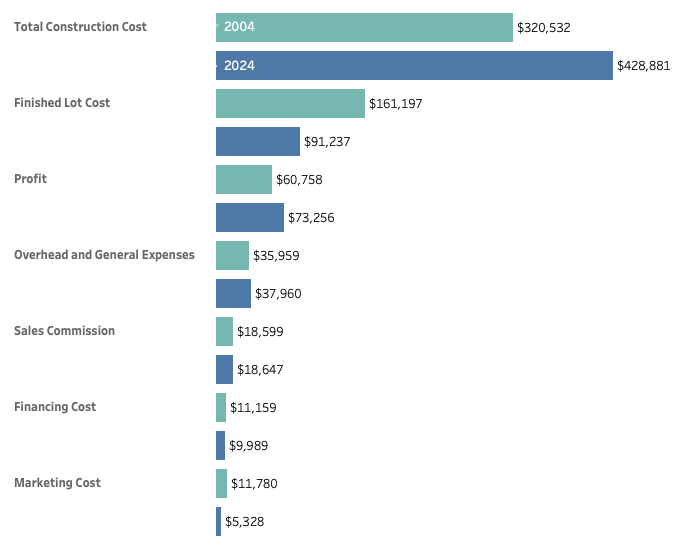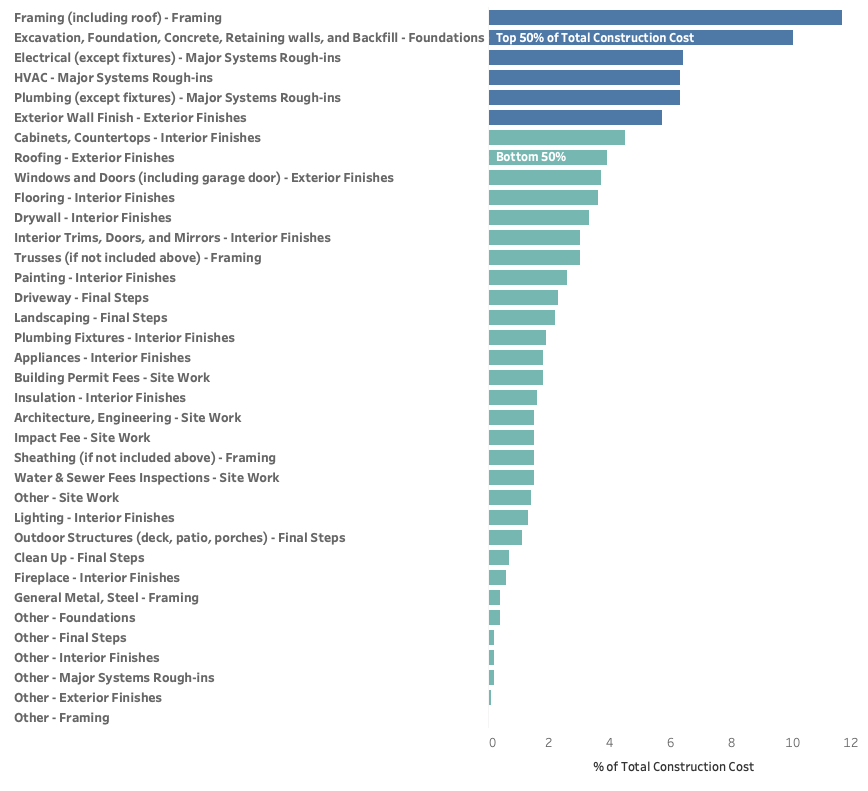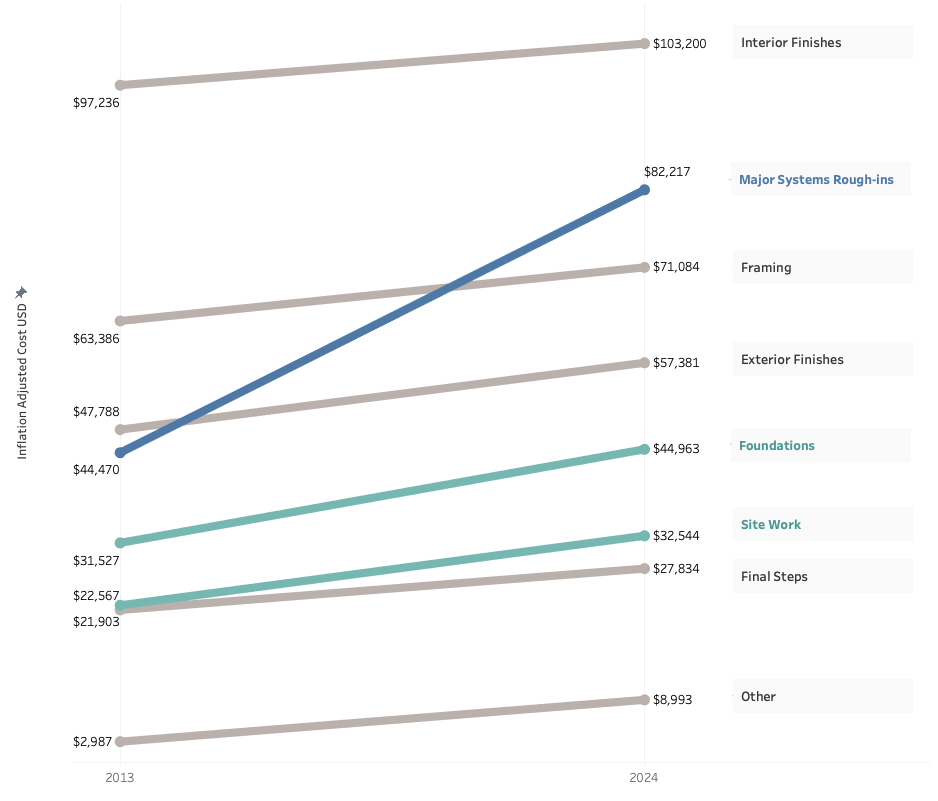The Climbing Cost of Construction
With the national median price of a new single-family home now exceeding $416,000, understanding the components driving these costs has never been more relevant. There are many reasons for these high prices, one of which is the cost of building a new home. To better understand this cost I analyzed data from the National Association of Home Builders (NAHB) which periodically surveys its builders to collect data on the various components that go into building a new single-family home. The NAHB survey provides valuable insights into the general trend in residential construction costs, with the caveat that it only surveys builders who are part of the association and may vary from national averages. Data for this analysis was pulled from their most recent Cost of Constructing a Home-2024 report.
The following are a some high-level takeaways from this report:
Construction Costs Account for Much of a New Homes Price
Construction costs make up the bulk of the sales price for new homes. In 2024 construction costs made up 64.4% of the price of a new home. In inflation-adjusted terms, this cost has grown 33.8% over the past two decades.

Few Line Items Account for Most of the Cost
A large part of construction costs are concentrated in the top line items with framing, foundations, and major systems rough-ins (electric, plumbing, and HVAC) accounting for nearly 50% of the total cost.

Specialized Trades are Increasingly Expensive
Over the past decade all costs of constructing a new home have increased. Notably, major systems rough-ins, comprised of electric, plumbing, and HVAC, has the most significant increase, nearly doubling over the past 11 years. Between 2013 and 2024 costs for these specialized trades rose 84.8% to $82,217 of the total cost of a new home, after adjusting for inflation.

Conclusion
- Rising construction costs are contributing to rising home prices.
- Reducing construction costs is a critical component to providing affordable housing.
- Cost-saving innovations in framing, foundations, and major-systems rough-ins have the greatest potential to drive down construction costs.
- The dramatic increase in costs for specialized trades hint at the structural challenges in the labor market for these essential services.